The Brooklyn Bridge is one of the most compelling attractions of New York City, allowing people to easily cross the East River from Brooklyn to Manhattan Island.
The Brooklyn Bridge has had several names, including “The New York and Brooklyn Bridge” and the “East River Bridge.”
It’s one of the oldest and most famous bridges in the United States and offered New York residents the first fixed crossing over the East River.
Since its construction, which started in 1869 up until completion in 1883, the Brooklyn Bridge has been iconic for the City of New York.
In this post, You’ll learn some of the most interesting facts about the Brooklyn Bridge in New York City.
1. Brooklyn Bridge construction
Building the Brooklyn Bridge was a huge endeavor so a lot of manpower was needed and equally important, a lot of money.
- 600 workers were utilized for construction.
- It took 14 years to finish the construction of the Brooklyn Bridge.
- It cost a grand total of $15 Million to build the bridge.
- Four immense cables are used to support the bridge. Each of these cables is 3,578 feet (1,090 m) long, 15.5 inches (40 cm) thick and made up of about 21,000 individual cables.
- 6740 tons of materials were used for the construction of the Brooklyn Bridge.
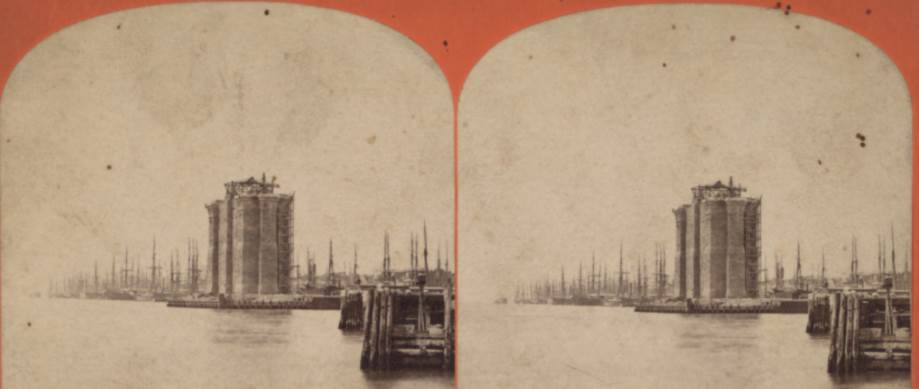
2. Building The Brooklyn Bridge Was Possible Because Of Fraud
Building the Brooklyn Bridge allowed the passage from Brooklyn to Manhattan. This was a very noble idea and would benefit the city tremendously.
Getting things rolling wasn’t that easy though. The enormous amount of money needed to not just start, but also to finish a project like this wasn’t easy to obtain.
Luckily for the project, not so much for him, corrupt politician William Magear Tweed, more commonly known as “Boss Tweed” had a plan.
- He offered $65,000 in bribes to New York’s aldermen.
- With this, he insured a $1.5 million bond in order to facilitate the start of the construction of the Brooklyn Bridge.
- He became the main shareholder Bridge stock.
- He would use his power in the committee taking care of the finances of the Bridge to earn big (corrupted) paychecks from the Bridge’s construction contracts.
His plan worked flawlessly concerning the construction of the Brooklyn Bridge. Boss Tweed himself, however, was arrested in 1871 for numerous counts of the same practice of the plan he had to enrich himself from public works in and around the city of New York.
He died in Ludlow Street Jail from pneumonia in 1878, not even alive to see the construction of the Brooklyn Bridge be finalized.

3. The John Augustus Roebling And Son Tragedy
John Augustus Roebling was a Prussian engineer that had a vision about connecting Brooklyn and Manhattan with one of the most amazing bridges the world would ever see.
While succeeding in his initial efforts, little did he know it would become his demise.
In 1869, his foot was crushed by a ferry when he was doing measurements for the bridge’s construction. This led to his toes having to be amputated and as a result of this, he developed tetanus which killed him the same year.
Nobody else than his son, Washington Augustus Roebling, took over the position as chief engineer from his late father.
He wasn’t lucky either.
He did great things for the bridge’s design and engineering, such as building large pneumatic caissons which would become the foundation of the two towers.
Unfortunately, after a fire in one of the caissons, he came down with caisson disease and would suffer from the consequences for the rest of his life.
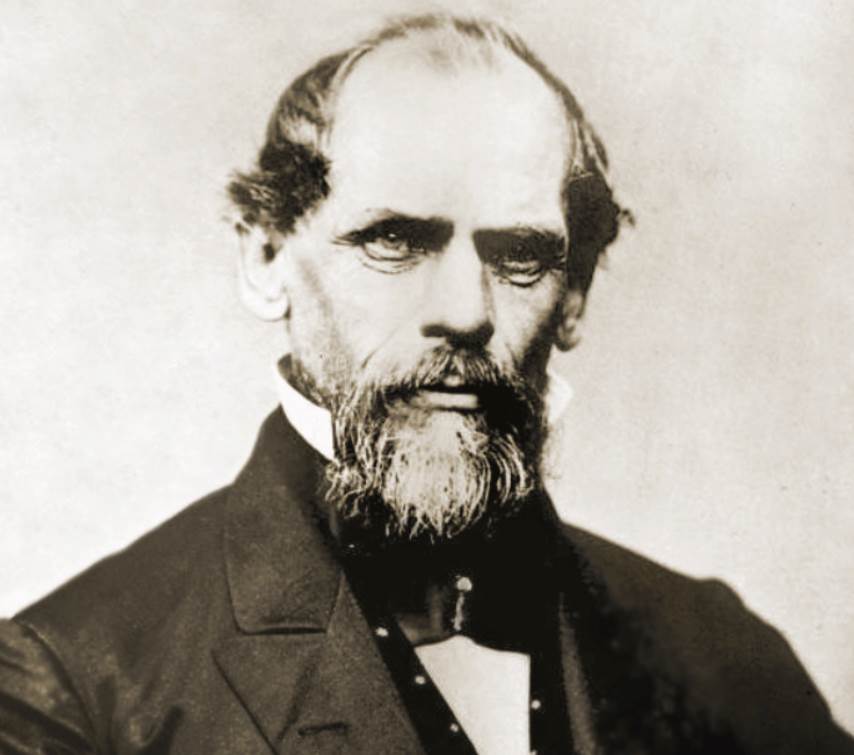
4. More Tragedy On Brooklyn Bridge
There aren’t any exact numbers, but they estimate that between 20 and up to over 30 people lost their lives during the construction of the Brooklyn Bridge.
Some people fell from the bridge, some construction workers fell from the towers or some passed away because of the same disease that struck Washington Augustus Roebling, caisson disease.
The most infamous tragedy happened just about a week after the bridge was opened. During Memorial Day, about 20,000 were on the bridge and a rumor started that the bridge was about to collapse.
Panic arose and in the mayhem that followed from people trying to get off the bridge to safety through a narrow staircase.
12 people lost their lives during this tragic event.
5. Proving Brooklyn Bridge Safety With Elephants
So who would dare to cross a completely new structure, never seen before in the country?
The only way to convince people that the bridge is strong enough for humans to pass is to prove it.
What better way to prove that the bridge can withstand human beings crossing than allowing 21 enormous elephants to do so first?
In 1884, 21 circus elephants marched across the Brooklyn Bridge to prove that the suspension cables were strong enough.
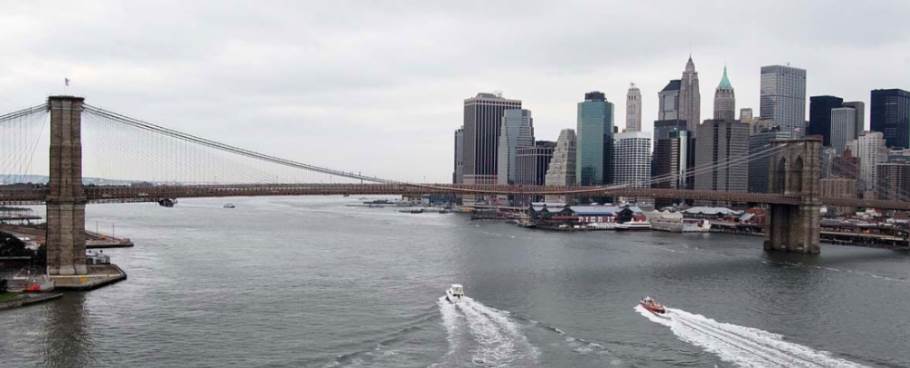
6. Brooklyn Bridge Initially Connected 2 Different Cities
Did you know that Brooklyn wasn’t a part of New York City at the time the Brooklyn Bridge opened?
A referendum was held in 1898 and only passed by a slight majority of 277 votes out of over 129,000 votes cast.
For New York City, the addition of Brooklyn to the city to become one of its neighborhoods was very important, as Brooklyn was one of the most populated areas in all of the United States.
This event and the opening of the Brooklyn Bridge have been crucial moments in the city’s history.
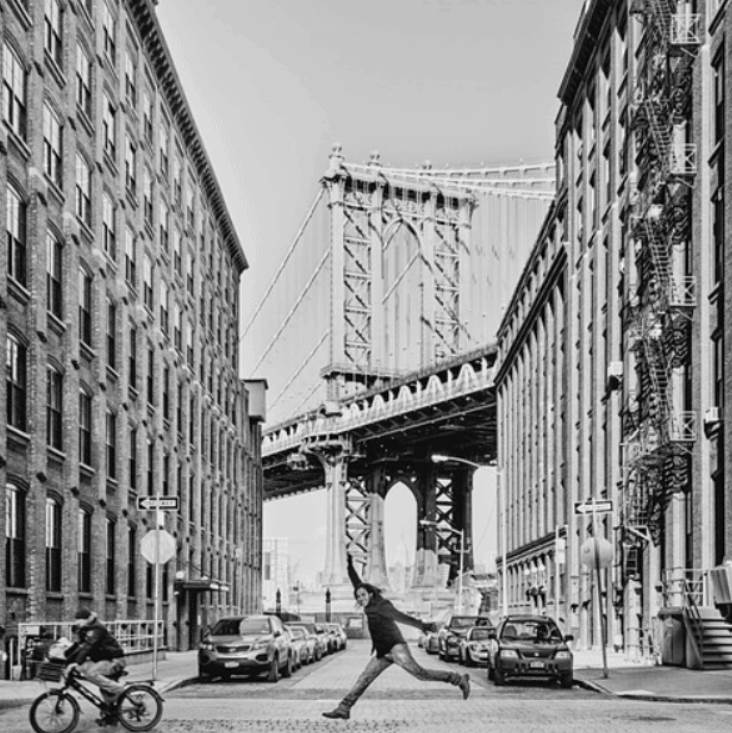
7. The Brooklyn Bridge Opening Celebration
The Brooklyn Bridge officially opened on May 24, 1883, and it was one of the greatest events the city had ever seen up until that moment.
The New York Times described this day about Brooklyn as:
“The greatest gala day in the history of that moral suburb.”
Other notable happenings were:
- President Chester A. Arthur, New York Governor (and future president) Grover Cleveland and a wide range of local politicians marched onto the bridge.
- In their footsteps, a huge amount of troops and a military followed.
- When they reached the other side of the bridge, canon fire rang in celebration.
- A one-hour display of fireworks marked the moment the bridge was opened for the public.
- Just after midnight, the bridge became publicly accessible and an estimated 150,000 people crossed it within the next 24 hours.
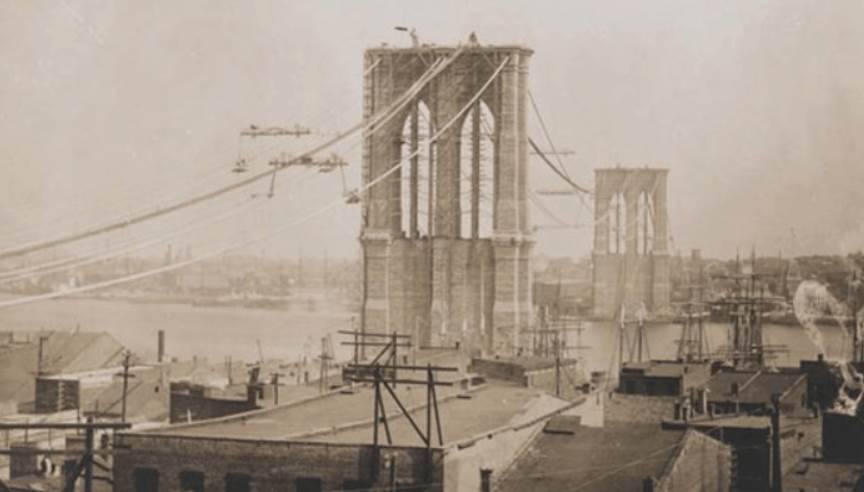
8. Crossing The Brooklyn Bridge Wasn’t Free
Up until 1911 when New York Mayor William J. Gaynor canceled the need to pay to cross the Brooklyn Bridge, there was a toll.
- 1 Cent to cross by foot
- 5 cents for a horse and rider
- 10 cents for a horse and wagon
If you want to bring along some animals, you needed to pay for those as well such as 2 cents for a sheep or hog and 5 cents for a cow.
From 1911 on, just as the 3 other bridges crossing the East River, crossing the Brooklyn Bridge has remained free for both pedestrians and vehicles, unlike other bridges for which the toll to pay has become increasingly more expensive over time.
9. The First Jumper Was Instantly Killed
On May 19, 1885, Robert Emmet Odlum, an American swimming instructor had the wonderful idea of jumping off the Brooklyn Bridge.
His reasons for doing this were two-fold:
- The noble part was the fact that he wanted to prove to people that it wasn’t dangerous jumping from a building, and would hereby help people take the leap when they find themselves in a burning building. Obviously there would be a net for them.
- The not so noble part is that he wanted to acquire fame and help himself and his mother financially.
At 5:35 pm he took his fatal leap. the wind slightly altered his course, making him land with a slight angle on his right leg and hip.
He died at 6:18 pm and the autopsy revealed he had ruptured his spleen, liver, and kidneys and had broken a couple of ribs.
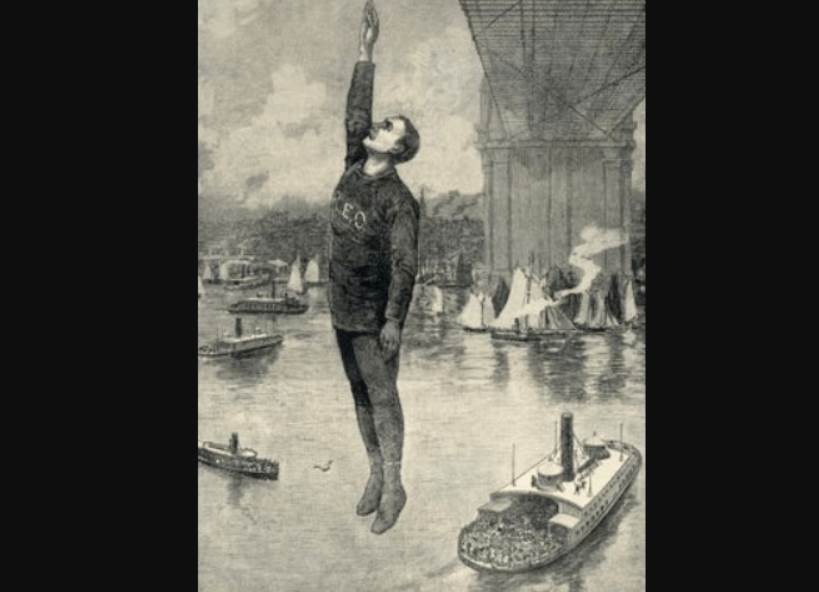
10. A Fake Jumper
Strangely enough, Odlum’s fatal jump didn’t deter others from trying their luck as well. The first reported jumper that survived was Steve Brodie.
He claimed to have jumped off the Brooklyn Bridge on July 23, 1886, but nobody knows if this happened.
The most plausible story is that he faked the jump as a dummy was thrown from the bridge and he jumped out of a rowboat.
Regardless, the story gave Brodie publicity, a thriving saloon, and a career as a performer.
11. The First Confirmed Survivor
With Steve Brodie acquiring a lot of fame from his “successful” jump, it inspired other people to achieve the same.
One of those was Larry Donovan, who prepared to jump off the Brooklyn Bridge on August 28, 1886. Because he prepared well, he made it without injuries.
Unfortunately for him, the jump didn’t bring him fame and fortune as he attempted to monetize his “act,” and found his death jumping off a bridge in London for a small wager.
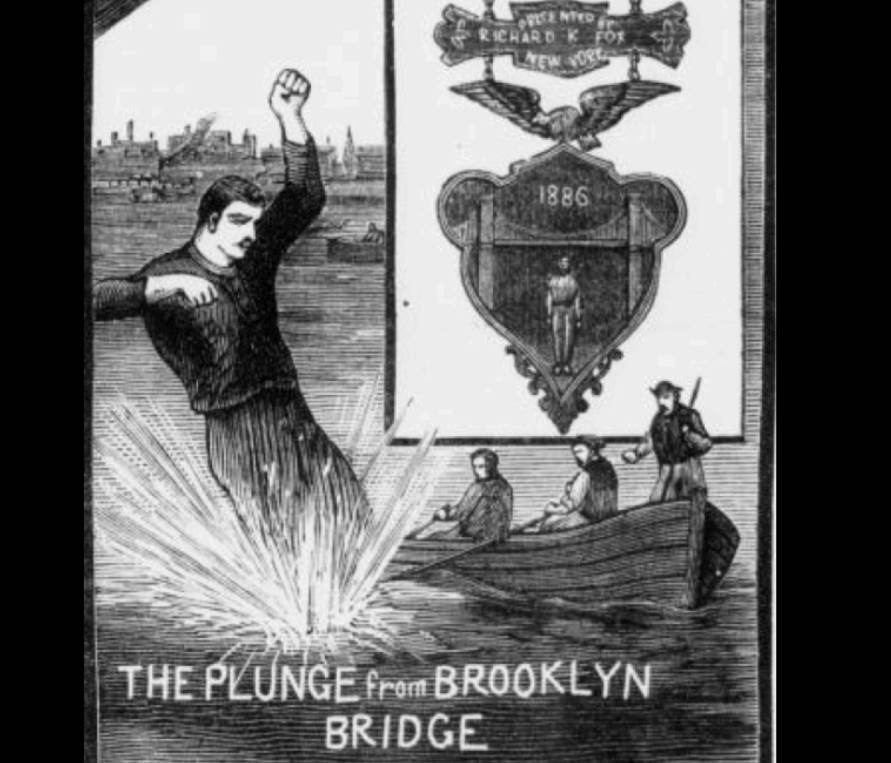
12. The Corrupt Contractor
The wire used for the suspension of the bridge is one of the most important materials of the entire project.
Yet, John Augustus Roebling, who was in charge of the purchase of the construction materials, failed to notice he had been conned by one of the contractors called J. Lloyd Haigh.
He managed to slip in the low-quality wire which allowed him to make huge profits.
Unfortunately, the whole thing was only discovered when the wire was already integrated into the bridge, making it impossible to replace them.
2 things were done:
- All measures were taken to ensure this wouldn’t become public during the construction.
- Integrating a lot more wire than was deemed needed for the construction of the Brooklyn Bridge.
Despite this being a huge crime that could have resulted in a massive tragedy if it remained undiscovered, J. Lloyd Haigh was never prosecuted for it.
13. Wine In The Brooklyn Bridge
Below the anchorages of the Brooklyn Bridge, there are huge underground storage rooms.
Up until WWI, these were used to store wine.
The reason for this is not only because these enormous vaults are very dark, but always remain at a cool temperature, perfect to create a gigantic wine cellar.
Some of these cellars were up to 50 feet tall and collected over $500 per month from companies renting them to store their wine such as ‘A. Smith & Company.’
Right now, these vaults are simply used to store maintenance equipment belonging to the city.
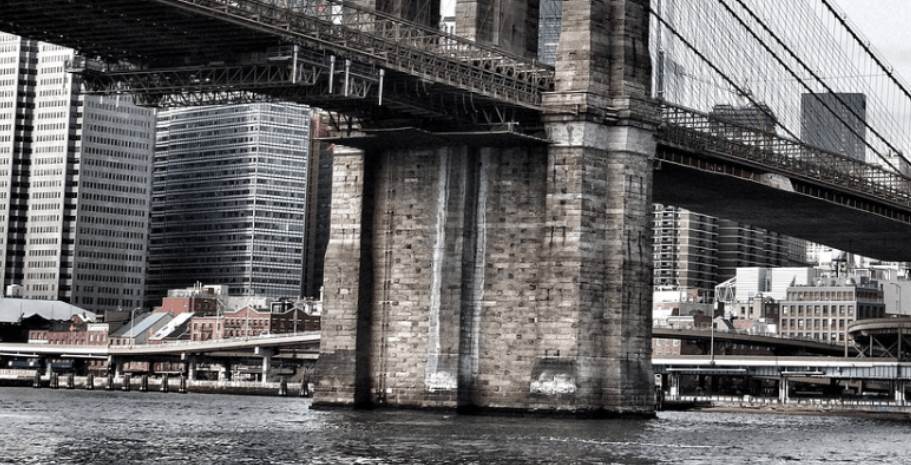
14. Cold War Supplies
Here’s one of the most interesting facts about the Brooklyn Bridge.
In 2006, researchers discovered something amazing inside one of the vaults inside the pillars of the Brooklyn Bridge.
Instead of wine, it was huge stocks of supplies that would allow New York citizens to survive in case there was a nuclear attack that decimated the city.
In other words, they stumbled upon a forgotten reminder of how dangerous the cold war was, and how close a nuclear attack was perceived to be.
15. What color is the Brooklyn Bridge?
In 2010, it was decided that the Brooklyn Bridge needed a new tan, and plans for repainting the bridge were made.
One slight problem though: Nobody knew exactly what the original color of the bridge exactly was.
There were two arguments:
- It was a buff color, renamed as the “Brooklyn Bridge Tan” for the modernization.
- Historical evidence pointed towards “Rawlins red,” which refers to the iron-oxide derived from the mountain town of southern Wyoming.
And the winner was: The “Brooklyn Bridge Tan!”
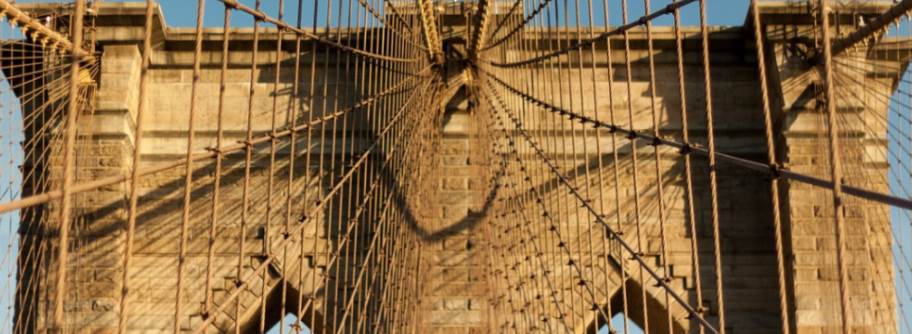
16. Longest Bridge in the World
John August Roebling, The Prussian immigrant engineer of which the Brooklyn Bridge was its brainchild, actually built another suspension bridge before creating the design of the Brooklyn Bridge.
In Ohio, he created the “John A. Roebling Suspension Bridge” (who else would be the creator of this one?), which had a total length of 1057 feet, connecting Covington and Cincinnati over the Ohio River.
While this was a great achievement in those days, it didn’t compare to the 1595 feet span of the Brooklyn who then became the longest suspension bridge in the world, only giving up the title in 1903 by its neighbor, the Williamsburg Bridge which also crosses the East River.
17. The Brooklyn Bridge Got Sold Nearly Twice A Week, For Years
Here’s one of those peculiar facts about the Brooklyn Bridge.
One of America’s most notorious con artists was George C. Parker. He was able to sell the Brooklyn Bridge in a careful set-up scam that involved:
- Convincing future victims that you own the bridge
- Make them an offer that is too good to be true
What worked in his favor at the time was the fact that numerous wealthy immigrants were pouring into Ellis Island, and that ownership of the bridge wasn’t clear, even for old New York residents because it involved 2 different cities, Brooklyn and New York City.
Additionally, police had to remove several of his victims from the bridge as they attempted to put up toll booths after they assumed they owned it.
Surprisingly enough, he was able to pull his trick successfully for a long period, was only caught 3 times, and spent the last years of his life incarcerated while entertaining his fellow inmates with stories of his numerous exploits.
Related: A con artist in Paris was able to pull a similar trick with the Eiffel Tower, which he successfully sold for scrap numerous times as well.

18. The First Presidential Mansion
The anchorage on the Manhattan side of the bridge has a bronze plaque commemorating where the “Samuel Osgood House” used to be.
The Samuel Osgood House was the country’s first presidential mansion, and George Washington himself lived there during the first 10 months of his presidency.
He moved in a week before his inauguration on April 30, 1789. The house was demolished back in 1856.

19. Home to the World’s Fastest Animal
In 1972, the DDT pesticide was banned in the United States, and this resulted in Peregrine falcons making a comeback in the East of the US;
They are the fastest animals in the world and can reach speeds of up to 390 kilometers per hour, which equals speeds over 200 miles an hour.
They like to nest on bridges and found a home in New York as about 16 pairs of peregrines live there today, some of them aking their home on the Brooklyn Bridge.
20. Huge Daily Traffic
Finally, a very interesting fact about the Brooklyn Bridge is the amount of traffic that crosses it daily.
- 100,000+ cars
- 2,600+ bikes
- 4,000+ pedestrians
These numbers show the importance of the Brooklyn Bridge for the city of New York and its people, and what this engineering miracle achieved to help New York in general.



